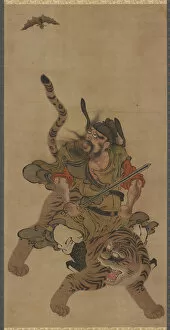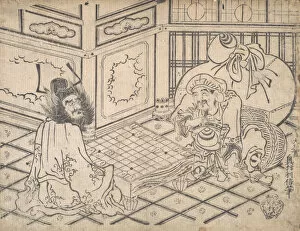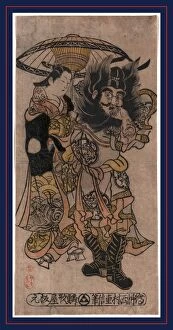Shoki Collection
"Shoki: The Legendary Demon Queller and Master of Dance" Shoki, also known as Zhong Kui in Chinese folklore, is a fascinating figure deeply rooted in East Asian culture
All Professionally Made to Order for Quick Shipping
"Shoki: The Legendary Demon Queller and Master of Dance" Shoki, also known as Zhong Kui in Chinese folklore, is a fascinating figure deeply rooted in East Asian culture. This legendary character has captivated the imaginations of many artists throughout history, resulting in a plethora of captivating artworks. One such artwork is "Dance of Korean King by Sai Shoki, " an enchanting depiction showcasing the mesmerizing dance moves associated with this iconic character. It beautifully captures the essence and gracefulness that Shoki embodies. In another masterpiece titled "Shoki the Demon Queller Riding on a Tiger, Subjugating Goblins, " we witness Shoki's immense power and strength as he fearlessly tames both mythical creatures and evil spirits alike. Created by Kawanabe Kyosai in 1887, this piece exemplifies his mastery over capturing dynamic scenes. The Edo period saw numerous interpretations of Shoki's legend come to life through art. One notable example is an album of paintings featuring "Shoki the Demon Queller. " Although its creator remains unknown, these intricate works from the 18th century showcase Shoki's prowess against malevolent forces. Hanzan's "Shoki Banner" from Japan in 1864 showcases yet another artistic representation of this legendary figure. Its vibrant colors and meticulous details make it truly stand out among other depictions. Okumura Masanobu's c. 1745 painting titled "Shoki the Demon Queller Sharpening His Sword" portrays a more introspective side to our hero—a momentary pause amidst his eternal battle against darkness—highlighting his unwavering determination to protect humanity. Utagawa Toyoharu's c. 1770 woodblock print presents us with yet another perspective on Shōki’s tale; it emphasizes his role as a guardian deity who safeguards people from supernatural threats with utmost dedication.






























